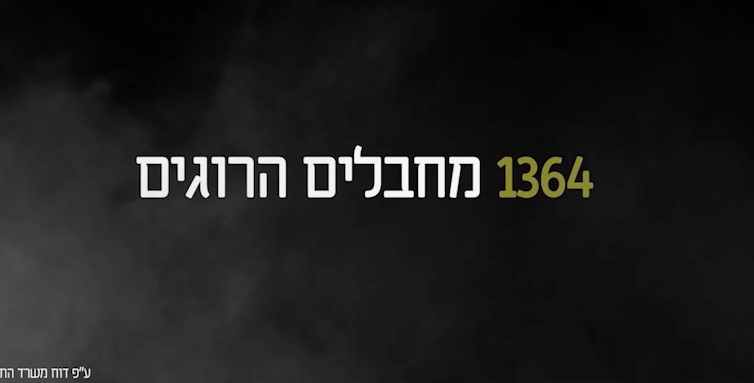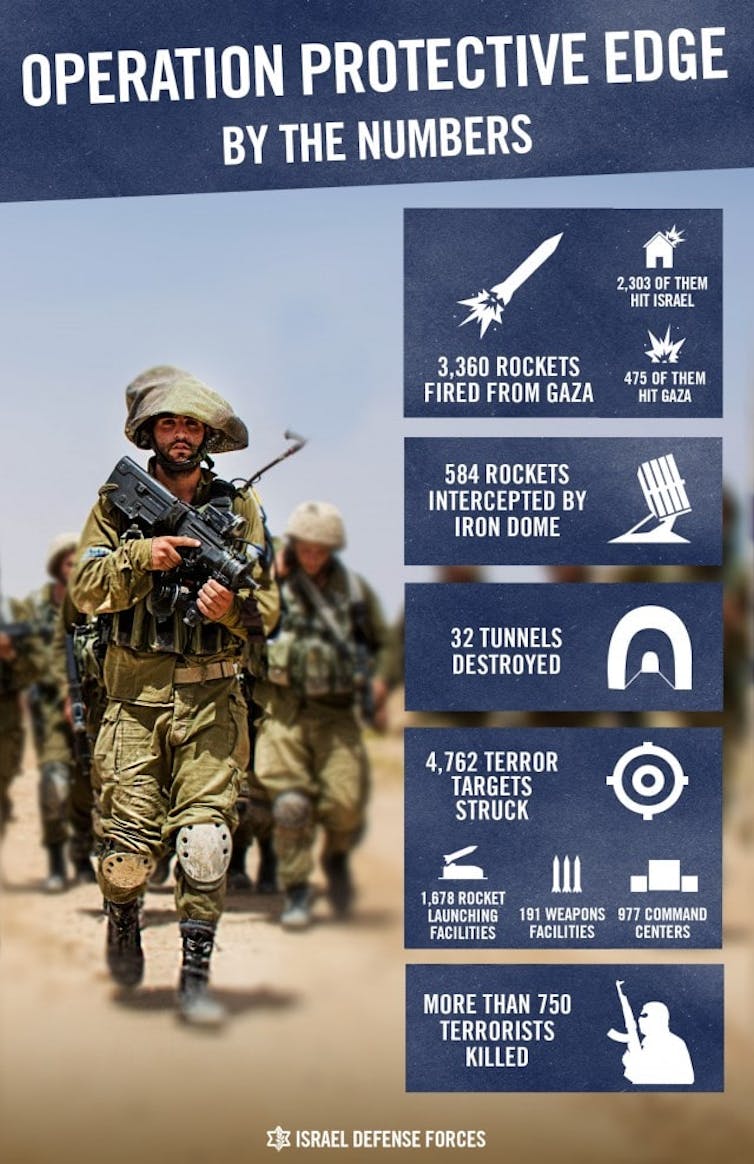
Israel goes to the polls on April 9 to elect a new Knesset (parliament) and the most prominent newcomer to challenge the prime minister, Benjamin Netanyahu, is Benny Gantz, a “centrist” who, like many before him, draws on his illustrious military credentials as former chief of staff of the Israel Defence Forces (IDF).
His Israel Resilience party, recently agreed on a joint ballot with the Yesh-Atid party and recent polls put Gantz in the lead – although this doesn’t necessarily mean he will be able to form a government.
This new “Blue and White” coalition frames Netanyahu as corrupt and driven to radicalisation by extremist partners. With three former IDF chiefs of staff at its helm, it draws on Israel’s militarism and the fact that the Israeli public considers the IDF to be the most trusted public institution, “the corporate custodian of national values” as Stuart Cohen wrote. Its campaign slogan – “Stopping the Madness” – aggressive rhetoric and tough guy photo opportunities suggest it can offer levelheadedness and a new brand of responsible leadership.
But while Netanyahu’s would-be coalition partners include Kahanists – right-wing extremists who advocate the forcible transfer of Palestinians out of the country – Gantz’s coalition offers no commitment to finding a route out of the Israeli-Palestinian impasse and has also ruled out any partnership with the Arab parties. Indeed, Gantz’s campaign seems to be following Netanyahu to the right – and even uses the killing of Palestinians as proof of the former general’s toughness.
Gantz was recently a wartime general, who presided over the 2014 Protective Edge operation in Gaza, during which 2,100 (mostly civilian) Palestinians were killed. B’teslem provides an interactive list of the fatalities on both sides – and the sheer number of children and elderly Palestinians blown up from a distance is staggering.
The indiscriminate nature of the Israeli attacks did not stop Gantz’s earliest campaign video from boasting about the killing of 1,364 terrorists during operation Protective Edge. This statistic is patently false – not because it reflects the IDF’s own count, which contrasts with data compiled by organisations on the ground, but because it includes 428 victims that the IDF itself pronounced “unrecognised” in its count of “terrorists”. It also suggests that dead Palestinians, regardless of their involvement in violent acts, are viewed as political capital in Israel.
The ‘victory image’
In an article published in the scientific journal Security Dialogue, I explore the idea of the “victory image” and the role it has played in Israel. The analysis explains how such a cynical mobilisation of a body count is deemed legitimate and even desirable.
Israel is a militaristic society that historically has venerated the battlefield as a place of moral purity, where the best character of the heroic soldier shines through. This is reflected in Israeli culture in general – and Gantz’s recent comparison of his experiences to those of Netanyahu is a case in point:
When I lay in the muddy trenches with my soldiers on frozen winter nights, you left Israel to learn English and practice it at fancy cocktail parties.
In 2006, when the war in Lebanon went awry, missiles were raining down on Israeli cities and Israeli casualties were mounting (although there were 30 times more on the Lebanese side), Israeli generals looked for some evidence of success. They had in mind a “victory image”, a symbolic battlefield photograph that would represent the best values of Israeli identity (honour, bravery, resilience) and indicate that the IDF was winning. Eventually, a victory image was found – of a soldier, muddied and injured, giving the victory sign as he is stretchered away.
During the subsequent Gaza conflict, TV studios, newspapers and the government sought a new victory image. But there was a marked difference between the Lebanon campaign and the attacks on Gaza. While in Lebanon a proportion of the fighting was up close and on the ground, Israel’s Gaza assault was almost entirely an exercise in aerial bombing.
Professor Yagil Levy from the Open University in Israel has shown that the IDF engaged in risk management, reducing efforts to limit Palestinian collateral damage to favour the safety of its own soldiers. Consequently, the pictures that emerged from Gaza were of dead children and devastated neighbourhoods, rather than heroic Israeli soldiers, and were generally not shown in Israel. The search for a victory image was not abandoned, however.
Victory image 2.0
With this in mind, instead of relying on photographs, the IDF started promoting information visualisations that show positive data in graphic form. Examples are credited to the IDF spokesperson’s office and appear on the websites of the Israeli Ministry of Foreign Affairs and the IDF Blog.

The logic of this transformation is simple. There is no way that images of destruction in Gaza can bring about any sense of achievement. Instead, game-like scoreboards present “victory” in a numerical form. It is an instance of what Allen Feldman termed the “actuarial gaze” that is associated with the “screening off” of collateral damage and a focus on “shock and awe” instead.
Gantz’s video is a perfect example of this. It starts with a note of dramatic music and chants of “Allah hu Akbar”. Next, a number ticker – counting the number of “terrorists” killed –starts running with muted visuals from Hamas in the background. The bodies of adults, wrapped in Palestinian and Hamas flags, are carried through a crowd, with weapons waved in the foreground. It ends with an armed man, his head covered by a balaclava and a ribbon identifying him as a member of the Izz ad-Din al-Qassam Brigades, the military wing of Hamas, next to a casket. Then the sound of a snare, reminiscent of a high-explosive blast, coincides with a jump cut into the graphic of the final tally – “1,364 terrorists killed” and the slogan “Only the strong are victorious”, all written in Gantz’s military khaki colour scheme.
We know that Israeli society is militaristic and that generals like Gantz regularly use their martial capital in the political sphere. But here we have something new. The horrific death toll of remote-controlled state violence is transformed by a combination of abstraction and quantification into a positive achievement, a victory image that is used to aggrandise a general-turned-politician as the very example of responsibility, levelheadedness and moderation.
Yoav Galai, Postdoctoral fellow at the Department of International Relations, Royal Holloway
This article is republished from The Conversation under a Creative Commons license. Read the original article.
